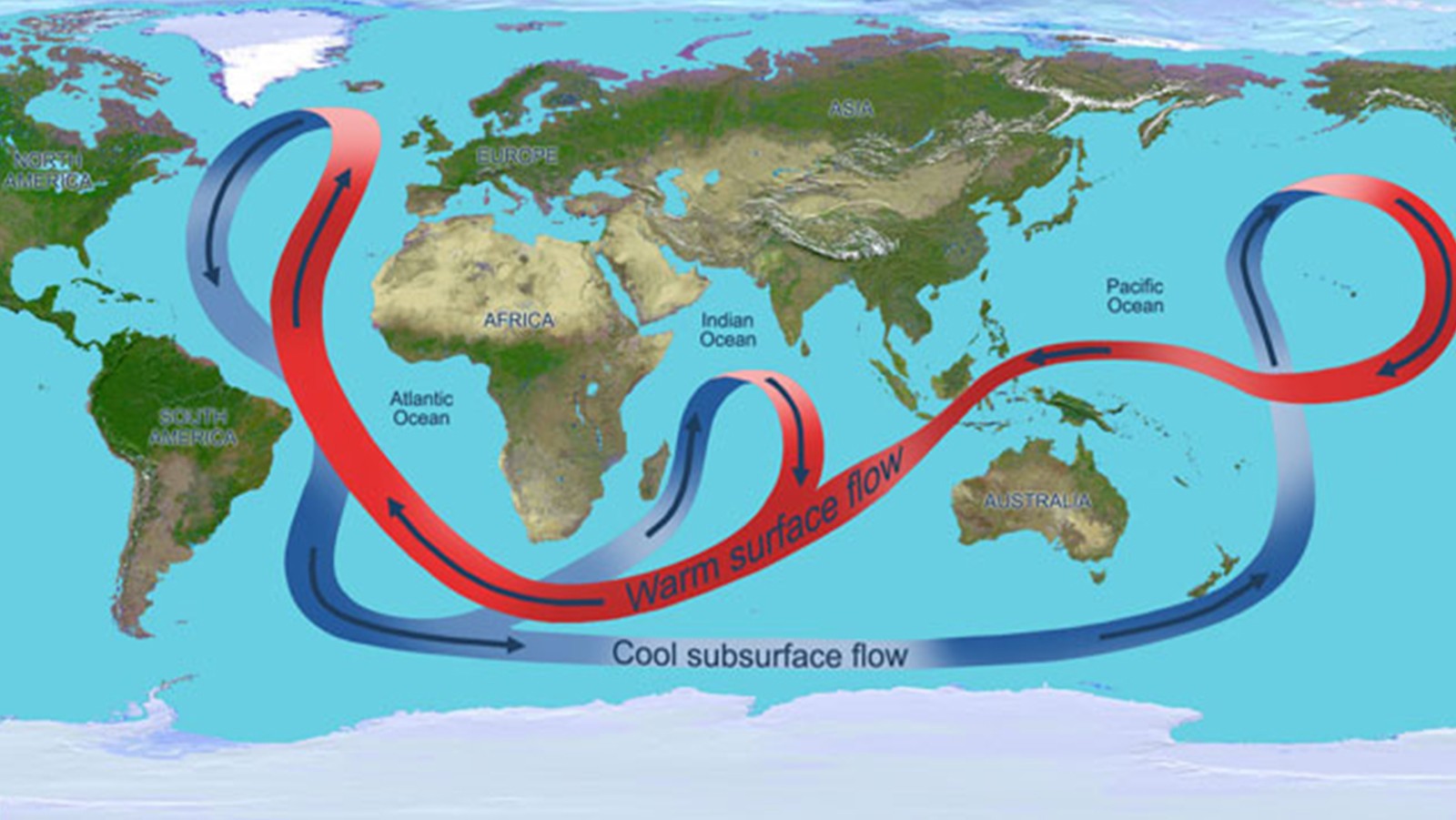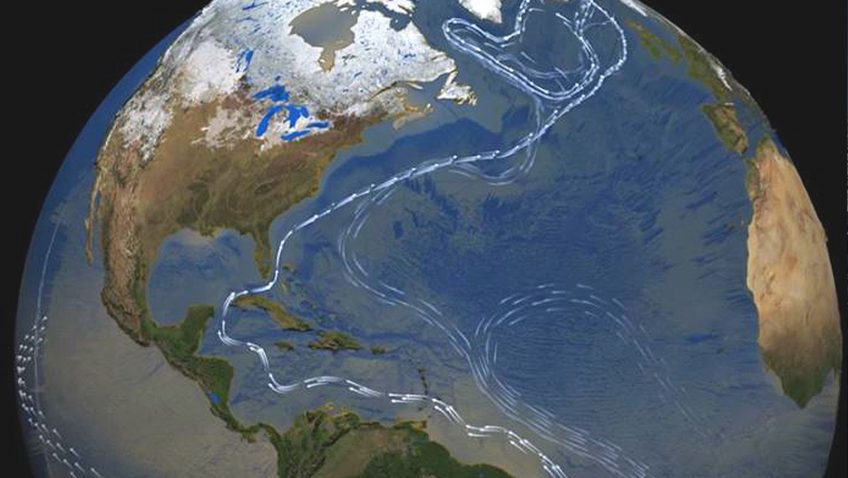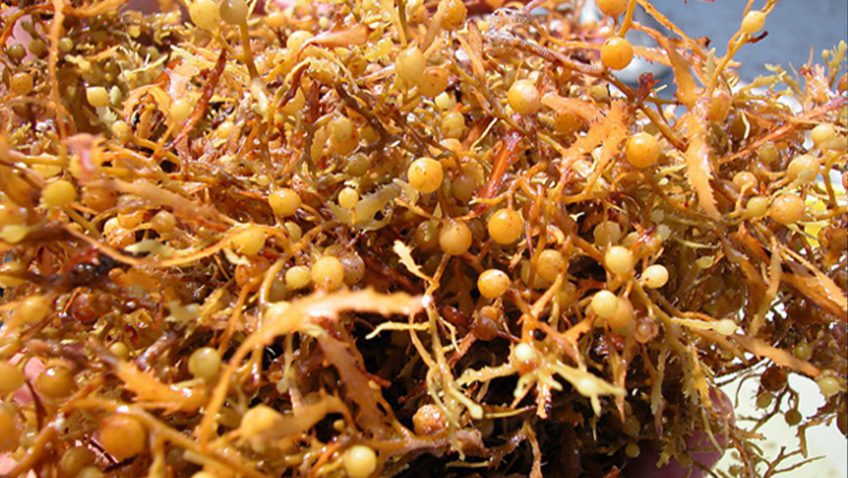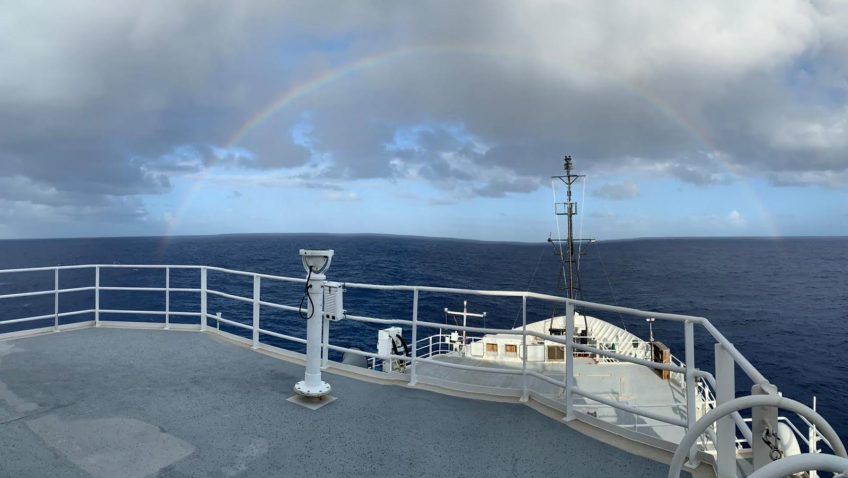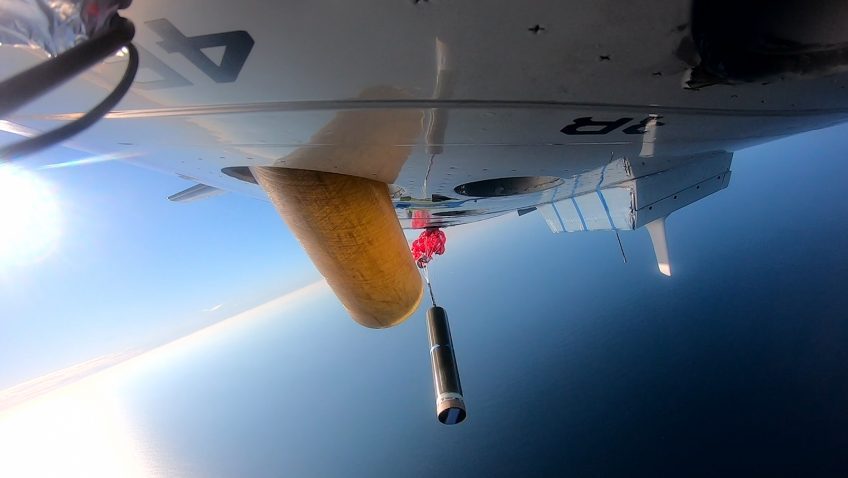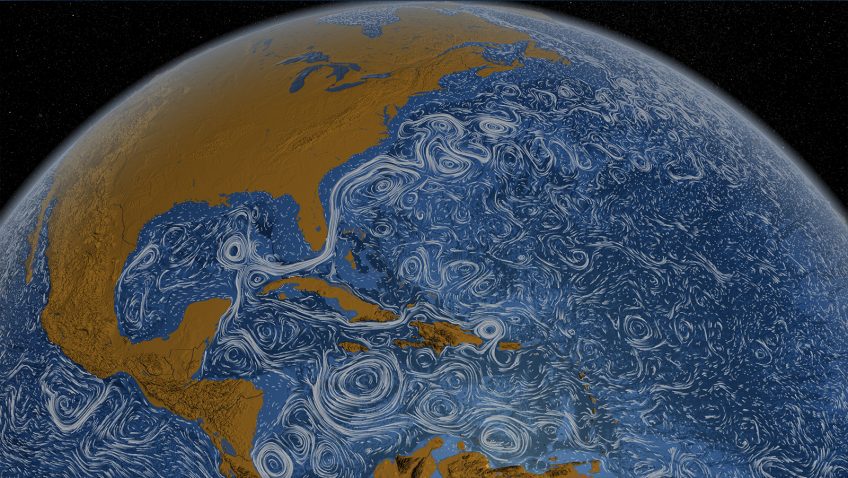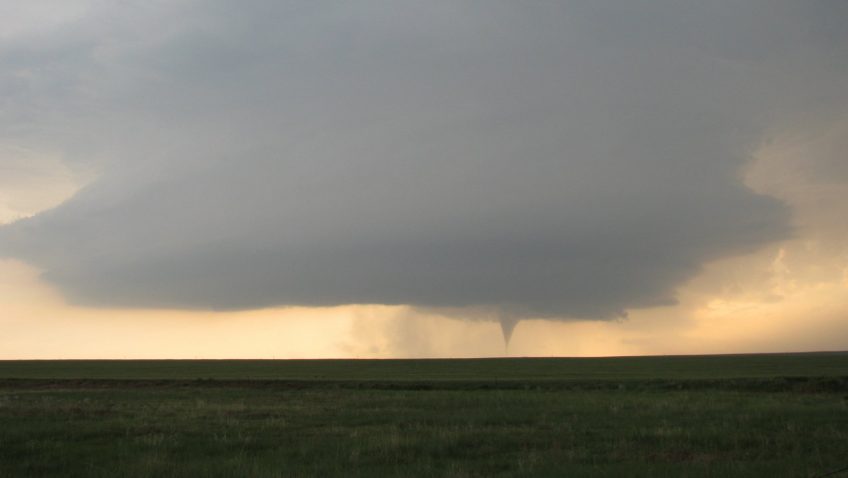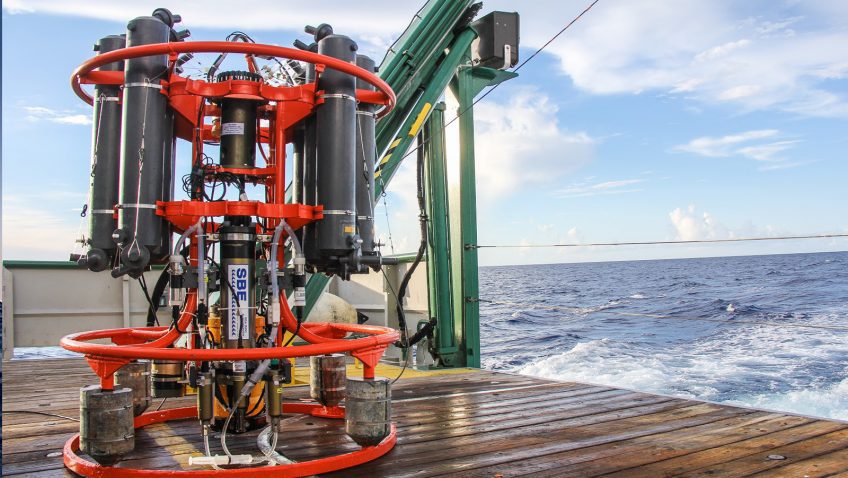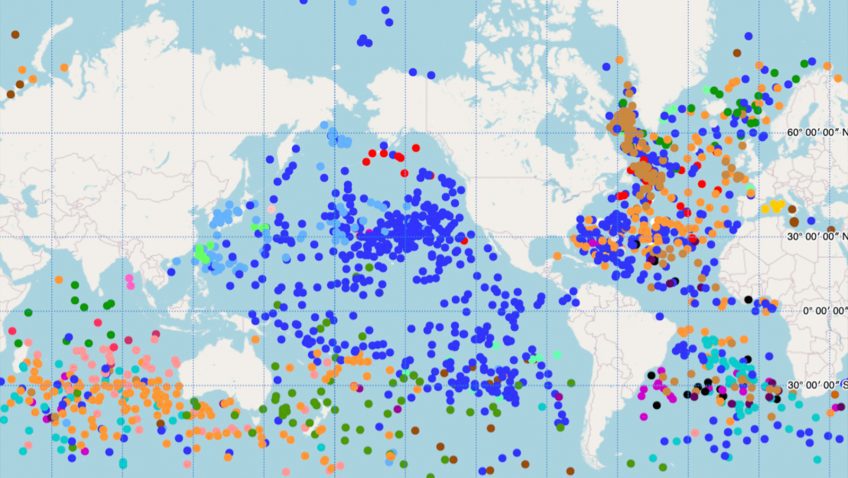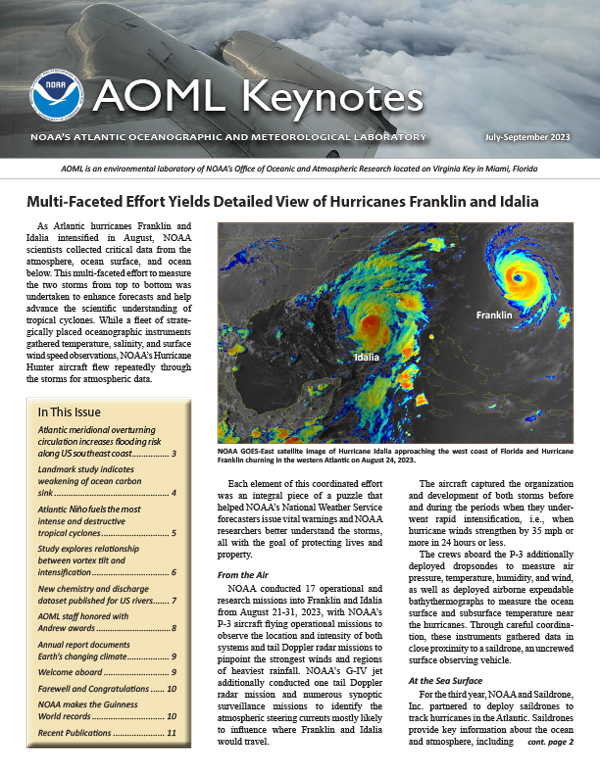AOML Scientists Develop First-ever Daily Estimates of the Heat Transport in the South Atlantic Ocean
In a recent article published in the Journal of Geophysical Research – Oceans, scientists at AOML evaluate the variability of the heat transport in the South Atlantic by developing a new method to measure its changes on a daily basis. This study presents, for the first time, full‐depth, daily measurements of the volume and heat transported by the Meridional Overturning Circulation (MOC) in the South Atlantic at 34.5°S based on direct observations.
